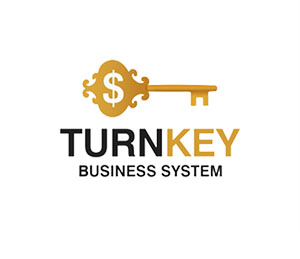
Price Trump’s 25% Auto Tariffs
In a sweeping move to bolster domestic manufacturing, former President Donald Trump—now back in office—signed an executive order on March 26, 2025, imposing a 25% tariff on imported vehicles and automotive components .
The policy, framed as a national security imperative, targets foreign-made passenger cars, SUVs, light trucks, and critical parts such as engines and transmissions.
Set to take effect on April 2, 2025, the tariffs aim to revitalize American auto production but risk igniting global trade tensions and disrupting complex supply chains.
The policy, framed as a national security imperative, targets foreign-made passenger cars, SUVs, light trucks, and critical parts such as engines and transmissions.
Set to take effect on April 2, 2025, the tariffs aim to revitalize American auto production but risk igniting global trade tensions and disrupting complex supply chains.

Price Trump’s 25% Auto Tariffs
The Tariff Breakdown: What’s Included?
The order applies to a broad range of vehicles, including sedans, SUVs, crossovers, minivans, and light-duty trucks. Additionally, automotive parts essential to vehicle assembly —engines, transmissions, drivetrain components, and electrical systems—are subject to the 25% duty. The White House retains flexibility to expand the list further, signaling a potentially broader crackdown on imports.Administration officials argue that the tariffs address a critical vulnerability: overreliance on foreign manufacturing. According to their data, 50% of the 16 million vehicles purchased in the U.S. in 2024 were imported , while domestically assembled cars often contain only 40–50% American-made parts. This means just 25% of all vehicles sold in the U.S. are fully domestic , a figure the tariffs seek to improve.
Rationale: Security vs. Protectionism
The White House justified the tariffs under Section 232 of the Trade Expansion Act, which allows trade restrictions to protect national security. Officials claim that a weakened domestic auto industry undermines the U.S. defense industrial base, as military vehicles and technologies rely on civilian manufacturing ecosystems.
Critics, however, decry the move as blatant protectionism . Chad Bown of the Peterson Institute for International Economics noted, “This is less about national security and more about shielding U.S. automakers from foreign competition.” The policy echoes Trump’s 2018 steel and aluminum tariffs, which triggered retaliatory measures from allies and strained global trade relations.
Global Backlash: Allies Strike Back
The tariffs have drawn sharp condemnation from key U.S. allies:Canada : Prime Minister Mark Carney condemned the decision as a “direct assault on Canadian workers,” vowing retaliatory measures. Canada, a top auto exporter to the U.S., supplies 1.8 million vehicles annually.
Japan : Prime Minister Shigeru Ishiba accused the U.S. of violating a 2019 trade pact that capped auto tariffs at 2.5%. Japan’s automakers, including Toyota and Honda, face steep cost increases.
EU and Mexico : Brussels warned of “proportional responses,” while Mexico—a major hub for U.S.-bound vehicles—threatened WTO litigation.
Asian and European markets saw immediate fallout. Shares in Toyota, Hyundai, and Volkswagen dipped 3–5%, while U.S. automakers like General Motors and Stellantis (Jeep/Chrysler) fell 3–4% amid fears of supply chain disruptions.
Impact on U.S. Automakers: A Double-Edged Sword
While the tariffs aim to boost domestic production, they could backfire. Major U.S. automakers rely on globally sourced components —many from Mexico, Canada, and Asia—to keep costs low. The 25% duty on parts may force manufacturers to raise vehicle prices, hurting American consumers.
For example, a $30,000 imported car would now cost $37,500, while domestically assembled vehicles using foreign parts could see price hikes of $1,000–$3,000. Analysts warn this could dampen sales and slow the adoption of electric vehicles (EVs), which depend on imported batteries and rare earth minerals.
Copper Tariffs: The Next Frontier?
In a related development, the Trump administration hinted at accelerating tariffs on copper imports , a critical material for EVs, infrastructure, and renewable energy. Bloomberg reports that duties may arrive within weeks—months ahead of schedule—after Commerce Secretary Howard Lathrop expedited a review.Copper prices in New York already trade at a $1,400-per-ton premium compared to London exchanges, reflecting market anxiety. A tariff could exacerbate shortages, raising costs for construction firms and EV manufacturers like Tesla.
Market Reactions and Economic Risks
The tariffs have injected uncertainty into global markets:
Currency Shifts : The yen and euro weakened against the dollar as traders brace for trade wars.
Supply Chains : Automakers may reshore production, but retooling factories could take years and billions in investment.
Consumer Impact : Higher vehicle prices could fuel inflation, complicating the Fed’s efforts to stabilize the economy.
Historical Context: Lessons from 2018
Trump’s prior tariffs on steel and aluminum sparked $15 billion in retaliatory duties from the EU, Mexico, and Canada. A 2023 study by the Federal Reserve found those tariffs cost U.S. companies $1.4 billion annually in lost exports. Critics fear a repeat scenario, with the auto tariffs potentially alienating allies and destabilizing the global economy.The Road Ahead: Uncertainty and Opportunity
While the tariffs aim to revive U.S. manufacturing, their success hinges on several factors:
Reshoring Incentives : Will subsidies and tax breaks offset the costs of relocating production?
Global Cooperation : Can the U.S. negotiate exemptions for allies, as it did with the EU in 2021?
Consumer Adaptation : Will buyers accept higher prices, or shift to used cars and public transit?
For now, the policy underscores Trump’s “America First” agenda—but with allies and automakers pushing back, the path to a stronger U.S. auto industry remains fraught.
Conclusion
Trump’s auto tariffs mark a bold attempt to reassert U.S. industrial dominance, but they risk sparking a trade war that could hurt American consumers and manufacturers alike.
As global tensions simmer, the debate continues: Will these tariffs secure the nation’s economic future, or accelerate a fracturing of the world order?
Only time—and the reaction of markets—will tell.
Key Takeaway : While tariffs aim to protect domestic industries, their success depends on balancing protectionism with global economic realities. For investors and businesses, agility will be key to navigating the shifting trade landscape.
Trump’s auto tariffs mark a bold attempt to reassert U.S. industrial dominance, but they risk sparking a trade war that could hurt American consumers and manufacturers alike.
As global tensions simmer, the debate continues: Will these tariffs secure the nation’s economic future, or accelerate a fracturing of the world order?
Only time—and the reaction of markets—will tell.
Key Takeaway : While tariffs aim to protect domestic industries, their success depends on balancing protectionism with global economic realities. For investors and businesses, agility will be key to navigating the shifting trade landscape.









Report
My comments